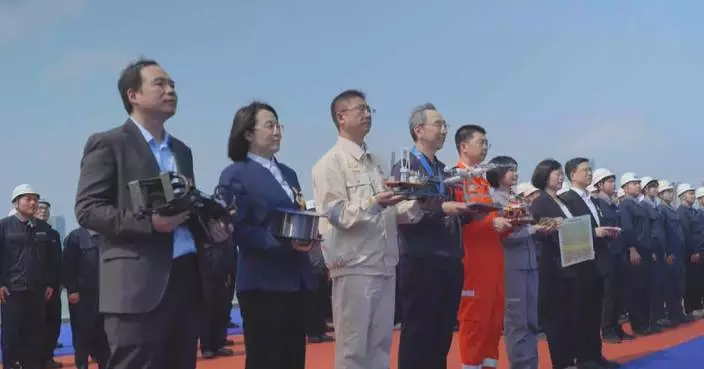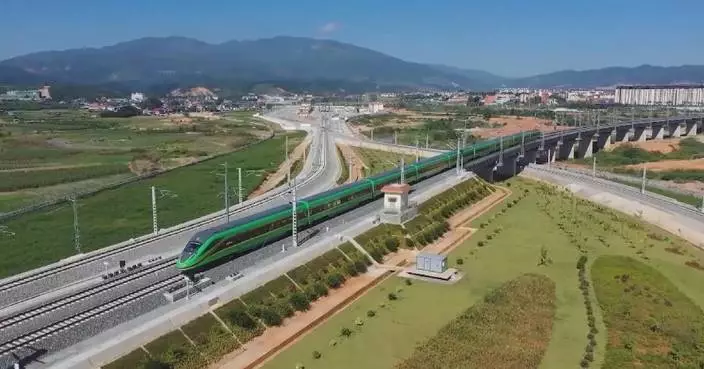China has built a complete Artificial Intelligence (AI) industrial system with the scale of computing power ranking among the top in the world, said the Ministry of Industry and Information Technology (MIIT) on Friday.
According to the MIIT, China has built industrial datasets in sectors including steel and coal and has cultivated a number of highly competitive general-purpose and industry-specific large models.
AI's advancement in algorithms follows two primary directions: general-purpose large models and industry-specific large models. While general-purpose large models, such as OpenAI's ChatGPT and DeepMind's Gemini, excel in multimodal and multilingual processing, accelerating the adoption of generative AI, industry-specific large models such as AlphaFold have revolutionized biology by predicting protein structures.
"New breakthroughs have been made in the AI large model technology, with rapid progress in model capacity development and application in specific scenarios. The total number of standard racks in use at computing power centers nationwide has exceeded nine million, while the country's total computing power has reached 280 EFLOPS," said Xie Shaofeng, chief engineer with the MIIT.
EFLOPS is a measurement unit used to determine a computer's speed. One EFLOPS computing system can complete 1 quintillion floating-point operations per second.
Moreover, large models are being rapidly implemented in industries including electronics, raw materials, and consumer goods, and are being applied in various stages including research and development and design, pilot-scale testing, production, and operations management. There have been over one hundred intelligent products including AI smartphones, AI computers and AI glasses, developed by domestic manufacturers, said the ministry.
The ministry has also coordinated with provincial governments to develop 11 national-level AI innovation pilot zones. Meanwhile, central and local authorities have jointly built specialized manufacturing innovation centers for embodied AI robots, humanoid robots, and other next-gen technologies to drive the development of industrial clusters.
In addition, the MIIT has established a 60 billion yuan (8.2 billion U.S. dollar) national AI fund jointly with China's Ministry of Finance to accelerate investment in related fields.

China makes great strides in building AI industrial system: authorities

China makes great strides in building AI industrial system: authorities
U.S. tariffs on Cambodia, which were set at 49 percent, have sparked concerns among the Southeast Asian country's key export industries such as garment manufacturing amid the ensuing economic uncertainties.
On April 2, U.S. President Donald Trump announced the 49 percent "reciprocal tariff" on goods imported from Cambodia, the highest among all countries. Days later, the U.S. reduced the so-called "reciprocal tariff" to 10 percent for 90 days, offering a window period to Cambodia for negotiations with it.
Cambodian businesspeople say the tariffs have the potential to wreak havoc on the country's manufacturing sector, which, according to data from the World Bank, makes up around a fifth of the country's GDP.
"For U.S. manufacturers, definitely, there will be a big impact. If manufacturers are focusing on U.S. products, they are now in the middle. They don't know what they should do at the moment because the tariff now from Cambodia to the U.S. is actually quite high," said Dr. Ben Li, a Hong Kong investor in Cambodia and Chairman of the Cambodia Chinese Commerce Association.
Nevertheless, Li sees the tariff hike as an opportunity to export more Cambodian goods to the European Union, where a majority of Cambodian exports enjoy duty-free status.
"I always say there will be a light (at the end of the tunnel.) Even now, the U.S. tariff is so high, it's going to be so high after 90 days, we don't know. But, there's still a big market to Japan or to the European Union. There's still a big opportunity there," he said.
The Cambodian investor also believes the development of major infrastructure projects will help support Cambodia's economy.
"Especially the new canal and then the new airport, and the railways which connect to China. I believe once the logistics and infrastructure are built up, it can help the whole country's economy. By reducing the transportation costs, it can also mitigate the tariff costs," he said.
Cambodia and the U.S. held their first tariff negotiations on April 16, with more expected to follow. Local experts said the stakes are high for the country's workers.
"If this negotiation fails, there will be a significant impact. It will include the garment and travel goods sector. These sectors consist of about 1,068 factories and 930,000 workers. The income generated from these sectors is about 3 billion dollars per year. So it would significantly impact Cambodia's economy, jobs and incomes," said Chey Tech, a socio-economic research and development consultant from Dynamic Alliance Consulting.
Despite the potential risks, Tech expressed his optimism about a positive outcome, citing Cambodian Prime Minister Hun Manat's letter to Trump on April 4.
"The Prime Minister's letter confirmed that Cambodia would reduce the tariff rate for U.S. goods to 5 percent. Second, Cambodia is the least developed country. Third, Cambodia produces goods that the developed countries won't produce. We asked whether the U.S. would be able to produce these low-cost products. It cannot," said Tech.
In 2024, Cambodia exported goods of 9.9 billion dollars to the U.S., making it the country's largest market, accounting for 37 percent of Cambodia's total exports.

49-percent US tariffs sparks worry among Cambodia's key export industries





















































